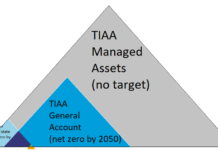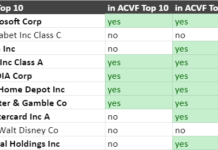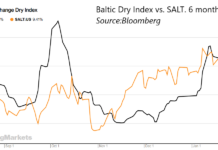Last week, I looked at how a small investor could gain an advantage in the market by understanding the other players. The most important other players are institutional investors such as hedge funds, pension funds, mutual funds, and investment banks who have considerably more resources and valuation skills than the individual investor, and so trying to take them on directly to beat them at their own is likely to be an expensive exercise in futility.
Two Exploitable Weaknesses
On the other hand, I argued that institutional investors have certain handicaps and biases which do allow small investors to enter the market on our own terms, and not compete directly with the institutions. These include:
- Too much money.
- A focus on quantitative as opposed to qualitative analysis, which leads to a focus on the past.
I listed several other weaknesses last week, but these are the two I focus on when doing my own investing. While the overall returns of some money managers are hurt by the agency problem (looking out for their jobs rather than their client’s returns) and the like, I have not come up with methods of taking advantage of these weaknesses. In fact, I think that there are a bunch of other traders and hedge fund managers out there doing just that, and the last thing I want to do is go up against hedge funds.
I’ll deal with just these two, and point to some tactics a small investor can adopt in the pursuit of an edge in beating the market. The underlying theme is always the same: in order to beat the market, we have to identify mispricings: instances in which the value most market participants place on a security differ from its true value. Small investors, with far fewer resources than institutional investors, should focus on securities that institutional investors are ignoring, or analyze securities in ways institutional investors do not. If you can think of other ways to exploit weaknesses of institutional money managers, all the better: you won’t be in competition with me, either.
Too Much Money
To a small investor whose biggest financial decision in life so far has probably been the purchase of a house, the idea of having too much money may seem laughable. Nevertheless, too much money is a very serious handicap for institutional money mangers, and the only handicap they all share. If you have $50 million dollars to invest (the size of a small mutual or hedge fund), and you’re looking for a stock that will add 0.1% to your returns if its price doubles, you are going to have to invest $50,000 in that stock. That won’t be a problem if you want to buy Archers Daniels Midland (NYSE: ADM) for exposure to ethanol and biodiesel, because your trade will barely be a drop in the daily volume of stock traded. On the other hand, if you want to buy $50,000 of Earth Biofuels [OTCBB: EBOF], which has a market capitalization of less than $100,000, you could easily wind up doubling the price of the stock in the process, greatly reducing or even eliminating any potential gains.
In other words, in order to make any profit on a stock, that stock must have some degree of market capitalization, and trade enough volume to make a substantial investment at a reasonable price. In other words, institutional investors are compelled by their size to invest only in companies that are (at least to some degree) reasonably large and liquid. There are no particular cut-offs on what makes a stock large or liquid enough for institutions, since institutions come in all sizes.
Because large investors can buy them, shares in highly liquid securities often trade at a higher price than they would otherwise (called a liquidity premium), and hence illiquid securities have, on average, higher long term returns. More importantly for our discussion, there are few or no analysts trying to asses the value of illiquid securities, and so a diligent individual investor is more likely to be able to identify an under priced security. If you want to find a rare coin, you have a much better chance if you look through a jar of pennies found in the attic than if you look in your loose change jar.
With a liquidity premium comes liquidity risk: the risk that, should you want to sell an illiquid security, you will not be able to sell at a reasonable price, or, on occasion, at any price. I have a personal rule not to put more than 1% of a portfolio into an illiquid stock, especially ones that trade off the regulated exchanges, and even then, I’ll also limit the fraction of the portfolio devoted to these sorts of stocks. Nevertheless, given the low professional interest in illiquid stocks, most of them are mispriced: the trick lies in finding the ones which are substantially undervalued rather than overvalued. It’s not uncommon to see a stock go up many times in a single year. On the other hand, it’s not uncommon to see them plummet to nothing in the same period.
Given the prevalence of over the counter stocks that are little more than an excuse to part investors with their money, I only look at companies that I read about in the non-financial press. I think of it this way: if a company’s purpose is to sound good to investors, they will target investors with their public relations. On the other hand, if they are out in the world solving real problems or providing necessary services for paying customers, then I’m much more interested. A company that’s talking about its great business plan to solve a problem I had not thought of on my own is much less appealing. Worse yet are companies setting out to solve a problem that everybody is talking about, which I take as a sign that a company is trying to hop onto a bubble bandwagon. Companies which are actually out making news (as opposed to generating PR news releases) are much more likely in my mind to have something customers want, and these are the companies which deserve further research.
If you’re considering investing in small, illiquid companies, no matter what sort of analysis you intend to do, I suggest you limit yourself to investing in no more than one third to a half of the companies you analyze. This will discipline you into making hard choices, and prevent you from putting money into a company simply because you feel that all the hard work you did researching it deserves to be rewarded. The market does not reward hard work: it rewards good judgment (a much rarer commodity).
Quantitative Analysis, and a Historic Bias
Much of my article last week was devoted to making the case that institutional money managers focus too much on quantitative analysis rather than qualitative analysis, and I won’t repeat that argument here. When considering the same companies that large investors analyze, we should not spend much time doing traditional valuation: it’s already been done by many other people who spend days analyzing one company, and poring though the footnotes.
When looking at big companies, the small investor’s potential advantage is lateral thinking, leaps of intuition that become less and less likely the more analysts delve down into the footnotes of a financial statement.
The stock market, and history as a whole, is prone to breaks and sudden reversals. When everything is going well, it becomes harder to see dangers lurking in the corner. When the roof seem
s to be caving in, it becomes hard to see the light at the end of the tunnel. Aggravating this is the fact that financial statements are historical documents. Typically, when an analyst wants to project the future of the firm, he will start with this historical data, and see how all the factors he can identify have interacted in the past, try to guess what these factors will be in the future (often by extrapolating existing trends), and see what comes out.
But what if the key to the future is not contained in the past? The millennium bug was a disaster that everyone saw coming, and because of that, they took the necessary steps to deal with it, and when 2000 rolled around, the whole thing was a fizzle. On the other hand, Long Term Capital Management failed because their sophisticated mathematical models of the complex relations between a wide variety of different financial assets failed when those relationships broke down during the Russian default in 1998.
Such Black Swan events are, by their nature hard to predict. But, to beat the market, we don’t have to predict the unpredictable, but only to make a prediction that most other people have not yet made. Some events defy prediction by their very nature, but more defy prediction because of our psychological biases. Put simply, few people predict things that should be obvious because they don’t want to see them coming. For instance, you probably know someone who was in a doomed relationship, but absolutely refused to acknowledge the relationship was ending until long after it was over. That happens all the time in the stock market. People did not believe that the stock market was overvalued in 2000 (despite repeated warnings) because they were too attached to making 15-20% a year on their investments. They were flipping condos up until a year ago despite the fact that both the ratios of home prices to rents and home prices to median income were at historic highs. These were predictable changes in the market, which people did not see because they didn’t want to see them.
I spend a lot of time trying to think about the unthinkable. What could happen that would totally change the rules of the game? What is the disaster that no analyst is building into their projections because it’s too difficult to contemplate or quantify? What are the chances that these things might happen anyway?
To beat the market, we need to "think outside the box." It’s a cliché, but it’s still a lot easier to talk about than do. And there’s no instruction manual.
Conclusion
Neither of these tactics is simple or easy to implement. If beating the market were an easy task, everyone would do it. Before you even try, you should first ask yourself if there is some reason you may be better than anyone else, because if you’re not better than most people who try, your results won’t be any better either, and you’ll end up losing money. Last year, I put together a quiz, with a very serious purpose: to help people self-assess if they might actually have an investing edge (or at least if they don’t have many of the traits that cause people to fail.) It’s not very scientific, but I like to think that it will help someone who shouldn’t be trying to beat the market to decide to index their portfolio, or at least persuade someone who is bound to try any way to dip their toe in rather than diving in head first.
I believe it’s possible for a small investor to beat the market over the long run, but I don’t think that most, or even many, small investors have much of a chance. It’s human nature to believe that we’re the exception to the rule, and in some ways it’s rather ridiculous for me to be telling you to take a hard look at yourself before you try: I wouldn’t have taken that advice.
What we need to decide for ourselves is how much of our confidence is actually overconfidence. Most of us who try to beat the market will fail, but I like to think that I’ve helped a few small investors along the way to success.
DISCLOSURE: Tom Konrad and/or his clients have positions in the following stocks mentioned here: ADM.
DISCLAIMER: The information and trades provided here are for informational purposes only and are not a solicitation to buy or sell any of these securities. Investing involves substantial risk and you should evaluate your own risk levels before you make any investment. Past results are not an indication of future performance. Please take the time to read the full disclaimer here.








